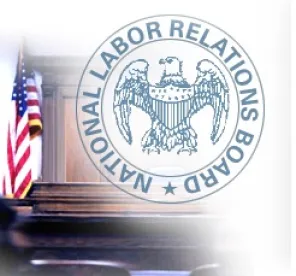August 13, 2020
-
The National Labor Relations Board (NLRB) modified its standard for determining whether an employer may lawfully discipline an employee for abusive or offensive statements and conduct in the context of activity otherwise protected under the National Labor Relations Act (NLRA). General Motors LLC, 369 NLRB No. 127 (July 21, 2020). The company disciplined an employee for multiple instances of abusive language toward management personnel while engaging in protected concerted activity protected by Section 7 of the NLRA. The employee filed an unfair labor practice charge alleging the discipline violated the NLRA. An administrative law judge (ALJ) found one of the instances of discipline violated the NLRA. The NLRB reversed the ALJ’s decision and, in doing so, overturned precedent governing the protections afforded abusive or offensive statements made during Section 7 activity. The NLRB had previously applied different standards for evaluating the legality of such statements and conduct, depending on the setting in which they occurred. Rejecting its setting-based standards, the NLRB decided that its landmark Wright Line decision is the proper standard to apply for deciding all cases “where employees engage in abusive conduct in connection with Section 7 activity, and the employer asserts it issued discipline because of the abusive conduct.” Wright Line, 251 NLRB 1083 (1980). Under that decision, the NLRB General Counsel (GC) has an initial burden of proof. If the GC meets the burden, the employer must prove it would have taken the same action even in the absence of the Section 7 activity. The NLRB will apply its decision retroactively “to all pending cases in which the Board would have determined, under one of its setting-specific standards, whether abusive conduct in connection with Section 7 activity had lost an employee or employees the Act’s protection.” The NLRB remanded the case to the ALJ to take additional evidence regarding how Wright Line applied to the facts of the case.
-
The U.S. Senate confirmed two NLRB members. On July 29, the Senate confirmed current NLRB member Marvin Kaplan and former member Lauren McFerran for seats on the five-member NLRB. One seat is unfilled. Kaplan’s term was set to end on August 27, 2020, while McFerran’s expired on December 16, 2019. McFerran’s new term expires in December 2024, while Kaplan’s expires in August 2025. Kaplan, Chairman John Ring, and Member William Emanuel are Republicans. Since December 2019, they have issued several unanimous decisions overturning Obama-era NLRB holdings. McFerran is the lone Democrat on the NLRB.
-
The NLRB ruled the employer at the center of litigation that resulted in the NLRB changing its “joint-employer” standard is not a joint employer with one of its contractors. Browning-Ferris Industries of California, Inc., 369 NLRB No. 139 (July 29, 2020) (B-F II). The NLRB held that the Obama-era NLRB’s 2015 decision that overruled 30 years of NLRB precedent on the standard for determining whether two unrelated employers are the joint employers of one of those employer’s employees [Browning-Ferris Industries of California, Inc., 362 NLRB 1599 (2015) (B-F I)] should not have been applied to Browning-Ferris, the employer at the center of the litigation that led to the NLRB’s 2015 decision. The NLRB found “retroactive application … of the new joint-employer standard in this case would be manifestly unjust.” This decision does not affect the NLRB’s joint-employer rule, which was effective on April 28, 2020. That rule “reinstated and clarified the joint-employer standard in place prior to” B-F I. Under that reinstated standard, to be found a joint employer, a business must possess and exercise substantial direct and immediate control over at least one essential term and condition of employment of another employer’s employees.
-
The NLRB decided on the legality of several of an employer’s work rules. Motor City Pawn Brokers Inc., 369 NLRB No. 132 (July 24, 2020). The NLRB decided on the legality of numerous rules in this case; three of those are discussed below. The employer prohibited employees from disclosing “confidential information,” defined as “information about marketing plans, costs, earnings, documents, notes, files, lists and medical files … computer files or similar materials.” The NLRB found employees reading the confidentiality rule would reasonably understand, from the numerous examples of confidential information provided in the rule, that they were prohibited only from disclosing legitimately confidential and proprietary information, rather than information pertaining to employees’ terms and conditions of employment. The employer also maintained a rule that prohibits employees from, among other things, disparaging the employer “regardless of whether any such communication is or may be true or founded in facts.” The NLRB found the non-disparagement rule lawfully prohibited employees from making false statements about the company, and the potential adverse impact on protected rights was outweighed by the substantial, legitimate justifications that are inherent to such a rule. On the other hand, the NLRB found the employer violated the NLRA by maintaining a rule prohibiting the unauthorized disclosure of an employee handbook, because it restricted employees in their Section 7 right to share information about terms and conditions of work contained in the handbook.
-
The NLRB found an employer’s policy restricting outside employment was lawful. G&E Real Estate Management Services, Inc. d/b/a Newmark Grubb Knight Frank, 369 NLRB No. 121 (July 16, 2020). The employer maintained a policy restricting employee’s outside employment that “might present a conflict of interest (including employment relationships, consulting relationships and service on boards of directors of corporations, educational institutions and charitable/not-for-profit institutions) and from making non-passive investments.” An administrative law judge found the policy was unlawful because employees “could” interpret it as banning organizing activities. However, the NLRB reversed the ALJ and decided the rule was lawful, finding the proper inquiry was how employees “would” reasonably read the rule, not how employees “could” interpret the rule. Applying that reasoning, the NLRB found the rule self-evidently aimed to prevent business conflicts of interest from outside work activities, such as employment, consulting, or board memberships, not the “much different” mere membership or volunteering in outside organizations. Accordingly, employees would not reasonably read the rule to extend to union organizing. The NLRB decided the policy was a lawful Boeing Category 1(a) policy.









 />i
/>i
